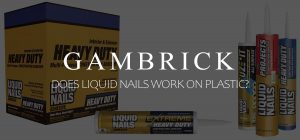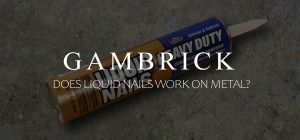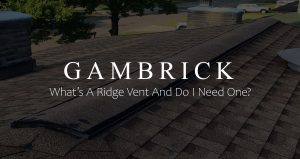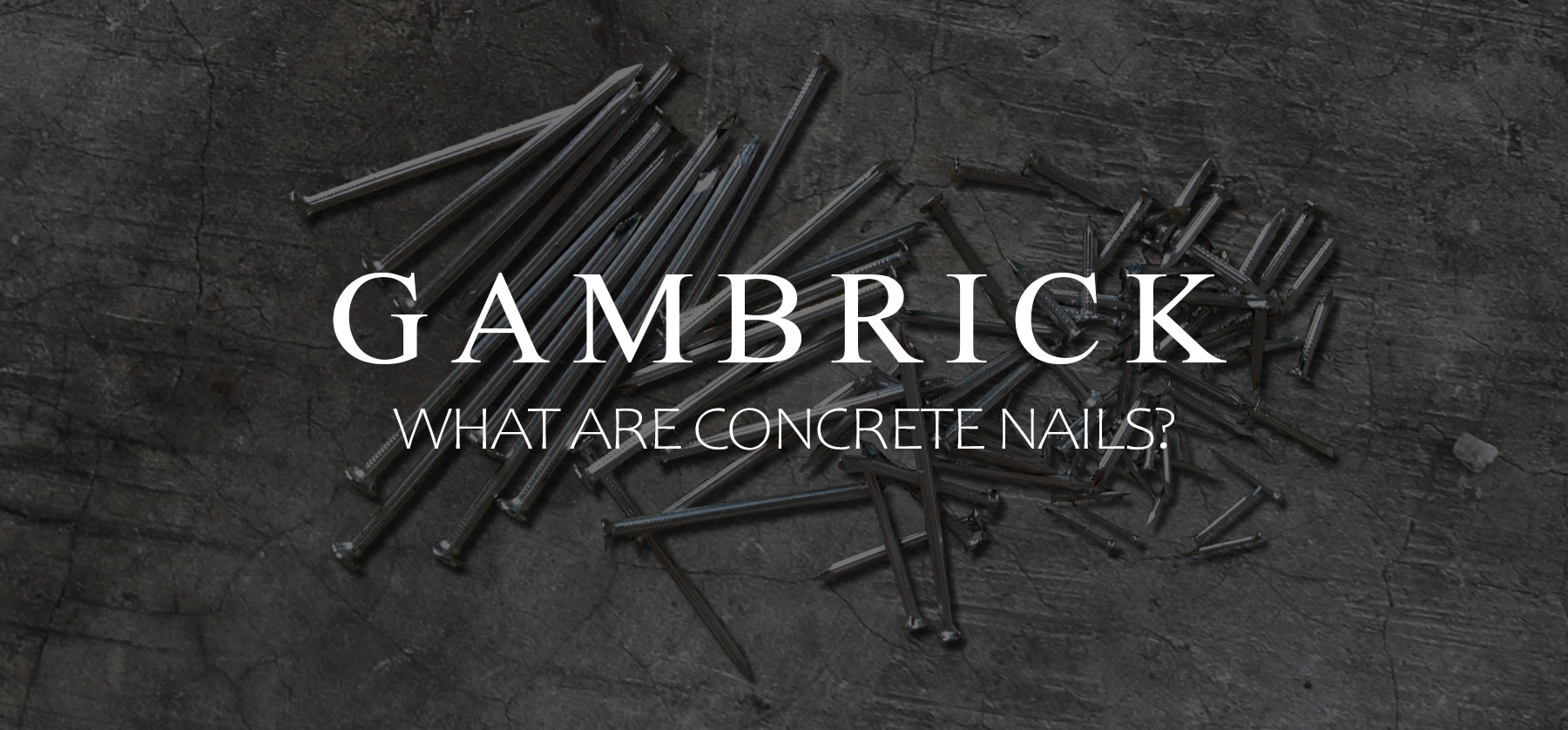
What Are Concrete Nails?
Concrete nails are a type of concrete anchor. They’re designed to sink into concrete with only a hammer to drive them or when fired from a special concrete nail gun. They’re made of hardened galvanized steel with a thick shaft and sharp point. I’ve been a mason for over 25 years and can tell you firsthand that it’s best to drive concrete nails in with a nail gun if you want deep penetration. When you drive in a concrete nail by hand, they only penetrate about 1/2 inch to 1 inch.
In general, I only drive concrete nails in by hand when it’s temporary. For permanent installations, for example, when framing wood walls on a concrete slab, I use a concrete nail gun. There’s no way to drive in a concrete nail by hand as deep as a nail gun can.
Concrete is hard like a rock and isn’t easy to penetrate even with a nail that’s designed to do it. But driving in concrete nails can occasionally cause a small crack. In this case, use a concrete crack filler to make repairs.
Powder actuated nail guns fire special nails into concrete using 22-caliber gunpowder cartridges. It’s like firing a small gun with a nail as the bullet. If you work with concrete, they’re an essential tool to own along with your trowels, floats, screeds and concrete tampers.
Concrete nails are very strong and won’t typically bend. The steel is much harder than what’s in a regular framing nail. They come in a variety of sizes ranging from 3/4″ to 3 “. Buy one that’s 1/4″ to 3/4” longer than what you’re attaching to the concrete. This gives you a strong hold with a nail head sitting flush with the object you’re securing.
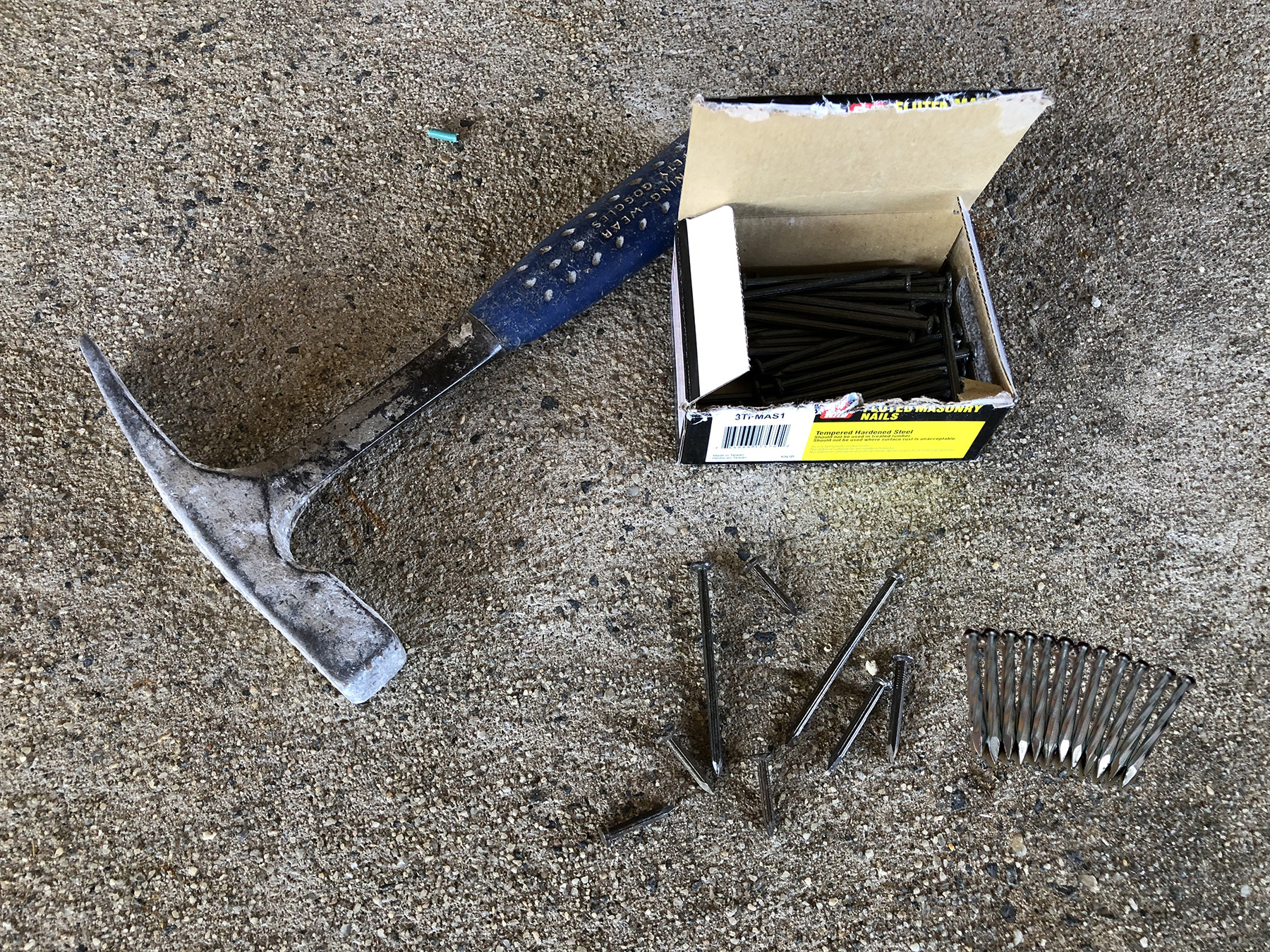
Types Of Concrete Nails
Concrete nails come in a few different designs: round, twisted and grooved.
- Round. Concrete nails with a round shaft generally have some small grooves near the head. This helps when nailing them through a block of wood or other object.
- Twisted. Concrete nails with a twisted shaft spiral into the concrete which creates a really tight hold. I like to use them along with a pilot hole. You don’t have to drill a pilot to use them but if you do the hold is really good.
- Grooved. Concrete nails with grooves running along the shaft are my favorite for hammering into concrete without a pilot hole. These are also called fluted nails. The grooves help the nail penetrate and create a nice solid hold.
Each works great for securing objects to concrete. However, for heavy duty work or most permanent applications I’d recommend an anchor or concrete gun.
Drive Concrete Nails Straight
In order to hold tightly, a concrete nail must penetrate straight into the slab. If it moves while you strike it, the nail will chip the concrete rather than make a hole.
If you’re using a concrete nail to hold a piece of wood to a concrete slab or wall, the wood helps guide the nail in. But you should still be careful as you start the nail. Make sure the first couple strikes drive the nail into the wood straight and it will continue that way until it penetrate the concrete.
Center each hammer blow directly on the head. Striking the head at an angle creates vibrations that can chip the concrete. This will result in a weak hold.
Drill Pilot Holes
Drilling a pilot hole isn’t necessary to drive in a concrete nail. But the nails only penetrate about 1/2″ to 3/4″ on their own. If you want to go in deeper you’ll need a pilot hole. With a deep enough hole you can sink an entire 3″ concrete nail.
The masonry bit you use to drill the hole should be at least an eighth-inch smaller in diameter than the nail shank. This will ensure a really tight hole. If it’s it’s any larger the nail won’t hold. The reason concrete nails hold is pressure. If the hole is too large there won;t be enough pressure to hold the nail in place.
Always vacuum dust out of the hole before driving in the nail. Dust left inside the hole can lubricate the nail shank which can cause it to back out over time.
Wear Safety Gear
Concrete nails look just like regular wood nails, but they have thicker shanks and vertical ribs designed to penetrate concrete. They’re made of hardened galvanized steel which can send tiny shards of metal flying through air when struck with a hardened steel hammer. These shards can penetrate the skin and injure your eyes.
Concrete is much harder than wood, so you have to hit the nail a lot harder to drive it in. This means a miss strike can really hurt.
Wear eye protection and gloves whenever you use concrete nails. You can also try using a mini sledge instead of a framing hammer. The steel is softer so there’s less chance shards will fly off the nail.
Concrete Nails Are Driven Manually With A Hammer
When you have to fasten something to concrete and don’t have power tools or a powder actuated gun, use concrete nails. They come in a variety of sizes and are fairly cheap. I carry them with me on just about every job I do. All you need to use them is a good quality hammer. I use a framing hammer or a mini sledge.
Get the nail in position and whack it hard and centered. Make sure you don’t hit on an angle because you can chip the concrete. A few hard strokes are all you generally need. If you hit the nail hard, on center and drive it straight, it will create a small hole to sit in.
Concrete nails have grooved shafts that cling to the sides of the hole they create. They prevent the nail from loosening because some concrete stays inside the grooves which creates pressure.
Concrete nails are good for medium duty applications when you don;t have power tools or a concrete gun.
How Do You Nail Into Concrete?
One of the ways you can nail into concrete is with a concrete nail. They’re special galvanized steel nails designed to drive into concrete with just the force of a hammer blow. They have a fluted edge and a sharp tip that penetrates about 1/4″ to 1/2″ deep with just a few hard whacks. Concrete nails are just about the only way to secure object to concrete without a power tool.
Another way is using a powder actuated nail gun that fires special nails into concrete using 22-caliber gunpowder cartridges. It’s like firing a small gun with a washer and nail as the bullet. They work great and make a lot of noise but they’re expensive and dangerous.
The last way is using a masonry anchor and nail. First a pilot hole is made using a screw-gun and drill bit. Once the hole is drilled and cleaned out, an anchor sleeve is inserted into the hole. Then a nail is driven into the sleeve which makes it expand outward into the concrete. When the sleeve expands it creates pressure that holds it in place. Many anchors hold so tightly they can’t be removed without damaging the concrete.
How Well Do Concrete Nails Work?
Concrete nails work really well if you use them correctly. They only penetrate into a concrete slab about 1/4″ to 3/4″ which is enough to secure objects like wood to a slab. I use them a lot when finishing basements. They’re great for things like securing the bottom plate of a 2×4 wall to the concrete slab. I used to use a powder actuated gun but switched because I hate the noise and danger of shooting a .22 caliber gun at a concrete floor.
Concrete nails are cheap, hold well and are very hard to pull out. They’re shaped just like thick common nails only they’re much stronger. Concrete nails are made from really hard galvanized steel so they don’t typically bend and need a lot of force to drive in. I recommend using at least a 20 oz. framing hammer.
Can Concrete Nails Crack Concrete?
A concrete nail can crack concrete, so be careful where you use them. If you nail near the edge of a slab or in an existing crack you could make things much worse. But if you drive a concrete nail in a thick area that’ not already cracked, you shouldn’t have any issues. I’ve used them dozens of times and have never caused a crack.
If you drive nails into damaged or flaky concrete then your chance of a crack goes up because the concrete’s softer. Be extra careful where you drive them if the slab isn’t new or in good condition.
How Long Should Concrete Nails Be?
Concrete nails driven by hand will only penetrate a slab about 1/4″ to 3/4″. So you want your concrete nails to be the thickness of what you’re securing plus 1/2″ to 3/4″. For example, if I’m attaching a 2×4 to a slab I use a 2″ nail. This will leave the nail flush with the top of the wood while penetrating 1/2″ into the concrete.
If you use a nail that’s too short it won;t go into the slab deep enough to hold. But if you use a nail that’ too long it’ll stick out from the wood’s surface.
Do I Need To Drill Pilot Holes For Concrete Nails?
No, you don not need to drill a pilot hole when using concrete nails.
Concrete nails driven manually with a hammer will penetrate 1/4″ to 3/4″ and do not require a pilot hole.
Powder actuated guns fire nails much deeper into a concrete slab than using a hammer. They don;t require a pilot hole either.
Concrete anchors that work using a nail and expanding sleeve do require a pilot hole. First drill and clean the hole or debris and dust. Then insert the sleeve into the hole. Finally drive then nail into the sleeve. The sleeve will expand itself outward which creates pressure that holds it tightly in place.
What Are Powder Actuated Nail Guns?
Powder Actuated Nail Guns, a.k.a. concrete guns, shoots nails into concrete using a .22 caliber cartridge. Each cartridge is filled with a small amount of gunpowder that explodes with enough force to drive a nail right through concrete.
Powder actuated concrete guns are much stronger than a simple hammer and nail. They can fire a 3″ nail completely into a slab.They work great but are expensive and dangerous. The nail acts essentially like a bullet and I don’t love the idea of firing a gun at a dense concrete slab. Although I do a=carry them with me on most jobs just in case I need it.
Always use safety gear when firing a concrete gun. Especially protective glasses.
Summary: What Are Concrete Nails?
Concrete nails are a type of concrete anchor. They’re designed to sink into concrete with only a hammer to drive them or when fired from a special concrete nail gun. They’re made of hardened galvanized steel with a thick shaft and sharp point. I’ve been a mason for over 25 years and can tell you firsthand that it’s best to drive concrete nails in with a nail gun if you want deep penetration. When you drive in a concrete nail by hand, they only penetrate about 1/2 inch to 1 inch.
I only drive concrete nails in by hand when it’s temporary. For permanent installations, for example, when framing wood walls on a concrete slab, I use a concrete nail gun. There’s no way to drive in a concrete nail by hand as deep as a nail gun can.
Concrete is hard like a rock and isn’t easy to penetrate even with a nail that’s designed to do it. But driving in concrete nails can occasionally cause a small crack. In this case, use a concrete crack filler to make repairs.
Powder actuated nail guns fire special nails into concrete using 22-caliber gunpowder cartridges. It’s like firing a small gun with a nail as the bullet. If you work with concrete, they’re an essential tool to own along with your trowels, floats, screeds and concrete tampers.
Concrete nails are very strong and won’t typically bend. The steel is much harder than what’s in a regular nail. They come in a variety of sizes ranging from 3/4″ to 3 “. Buy one that’s 1/4″ to 3/4” longer than what you’re attaching to the concrete. This gives you a strong hold with a nail head sitting flush with the object you’re securing.
If you have any questions about concrete nails, email any time.

John Mazzuca | About | More Posts |
Custom Home Builder
John Mazzuca is a custom home designer and builder at Gambrick with over 25 years experience in the construction industry. John has designed, built and/or remodeled hundreds of homes, small buildings, and commercial projects. He writes about business, real estate, home building, and household electronics. His work has been featured in Fox Business, Better Homes & Garden, House Beautiful, and more.




